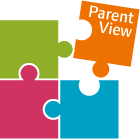In today’s ever-changing educational environment, teaching tools have evolved as indispensable companions, transforming the ways in which we learn and teach. These tools are available on a variety of platforms, each optimized for different aspects of the educational journey. Within this comparative study, we immerse ourselves in the multifaceted landscape of educational tools. Here, we investigate their influence and features, concurrently evaluating how leading competitors navigate this dynamic terrain.
Types of Educational Tools
Classification and Description: Let's initiate our exploration by categorizing instructional gear into 3 primary domains: Learning Management Systems (LMS), Interactive Apps and Platforms, and Virtual Classrooms and Collaboration Tools.
Learning Management Systems (LMS): Serving as the backbone for plenty academic stories, LMS systems offer a centralized hub for direction materials, assessments, and communique. Embraced in traditional and online academic settings, platforms such as Moodle, Canvas, and Blackboard facilitate seamless interaction between educators and college students.
Interactive Apps and Platforms: Beyond the traditional LMS, interactive apps and platforms introduce a dynamic element to the studying system. Tools like Kahoot!, Quizizz, and Duolingo contain gamification into training, making instructions captivating and nurturing a competitive spirit among students.
Virtual Classrooms and Collaboration Tools: In an age of worldwide connectivity, digital school rooms and collaboration equipment have ended fundamentally. Zoom, Microsoft Teams, and Google Meet have gained prominence, offering immersive reports that go beyond geographical boundaries and improve collaborative gaining knowledge.
Comparative Analysis of Competitors
As we shift our focus to the competitive landscape, it's essential to spotlight major players in the educational tools market. From established giants like Google and Microsoft to innovative disruptors such as Edmodo and Schoology, each competitor brings a unique perspective to the table.
Feature-by-Feature Comparison
| Aspect | Examples and Comparisons |
|---|---|
| User Interface and Experience | User interface significantly influences the effectiveness of educational tools. Google Classroom, renowned for its simplicity, contrasts with Microsoft Teams' comprehensive ecosystem. The user experience is subjective, with each platform offering distinct advantages based on individual preferences. |
| Customization and Flexibility | The ability to tailor academic tools to unique needs is paramount. Edmodo, with its focus on social learning, differs from the structured approach of Blackboard. Flexibility in customization ensures that educators can adapt tools to match various learning styles. |
| Integration Capabilities | The seamless integration of educational tools with existing systems enhances overall functionality. Microsoft Teams excels in this aspect, providing a unified platform that integrates with various Microsoft applications. Integration fosters a cohesive educational environment where tools complement rather than compete. |
| Data Security and Privacy Measures | Growing apprehensions regarding information security and privacy have taken center stage. Both Google Classroom and Microsoft Teams tackle these concerns head-on, incorporating robust security features to guarantee the protection of sensitive data. Understanding these measures is crucial for institutions and educators committed to safeguarding student data. |
| Scalability and Accessibility | The scalability of educational tools determines their applicability across different educational settings. Zoom, renowned for its user-friendly interface, has exemplified scalability by effectively accommodating extensive virtual classrooms. Its commitment to inclusivity is highlighted through features like closed captioning and screen reader support, fostering a learning environment designed to cater to the needs of every student. |
Impact on Learning
To truly grasp the impact of educational tools, we turn to those at the forefront: students and educators. Testimonials reveal the transformative power of these tools, from breaking geographical barriers to fostering collaboration and engagement.
Real-world case studies offer tangible insights into the practical application of educational tools. Examining instances where these tools made a significant impact, we uncover success stories and identify areas where challenges were addressed, providing valuable lessons for future implementations.
Future Trends and Recommendations
As we peer into destiny, the mixing of emerging technologies like Artificial Intelligence (AI) and Virtual Reality (VR) emerges as a great trend. AI-pushed customized studying stories and VR simulations are poised to revolutionize schooling, providing immersive and tailored techniques to individuals gaining knowledge of desires.
Tailoring recommendations for various educational levels ensures that students with diverse learning needs find tools that resonate with their academic journey. High school students may benefit from interactive apps, while college students might lean towards collaborative platforms. Vocational training programs can leverage LMS for structured learning experiences.
In this comparative study, we navigated the expansive realm of educational tools, dissecting the features, analyzing competitors, and uncovering their impact on learning. As we recap the main findings, one overarching truth emerges – the importance of choosing the right educational tools. The transformative capability of these tools extends an invite to college students: discover, engage, and embody the virtual frontier that is shaping the destiny of schooling. It's now not simply about equipment; it is about empowerment, collaboration, and the belief that schooling knows no bounds. As you embark in your academic journey, may those tools be your partners, guiding you toward a destiny of boundless expertise and possibilities.







